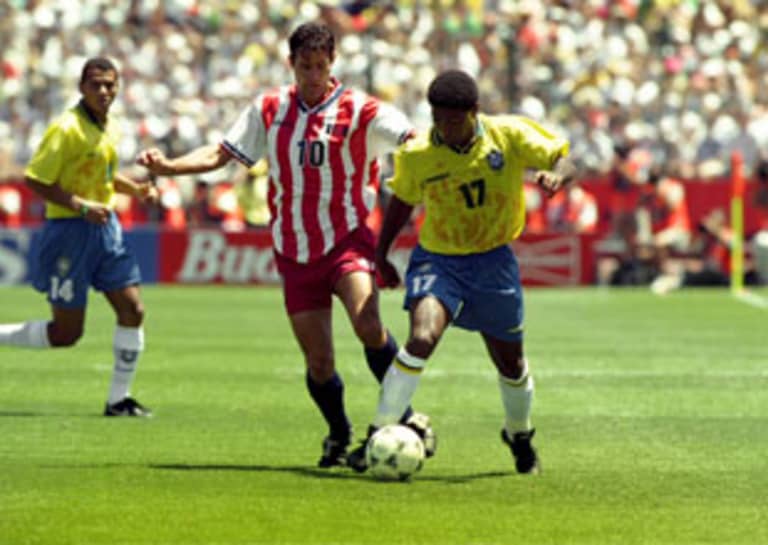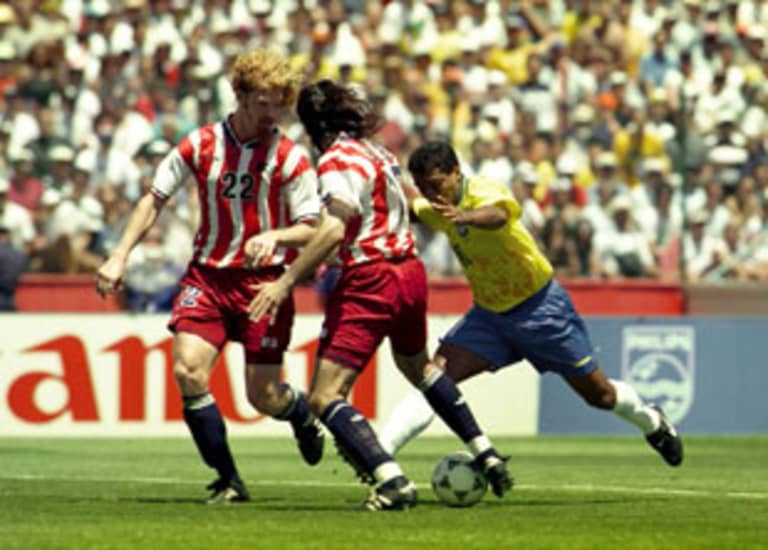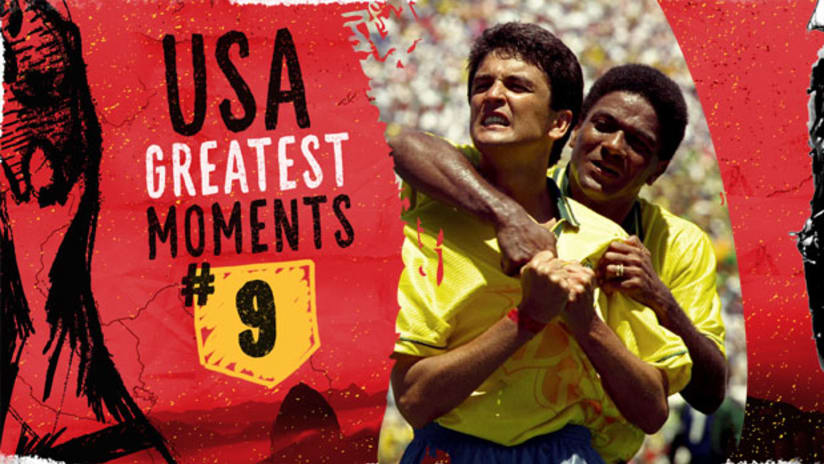“A greatest moment? I can see that – I know how special that day was from every perspective. But does it compare to Colombia, or any of the other [World Cup] wins? No, not really. Not close.”
– Alexi Lalas
The US played their first knockout-round game of the modern era in the 1994 World Cup, on July 4 under a blazing sun in front of a sold-out stadium filled with home fans in the red, white and blue. Everything seemed to be lined up perfectly for an improbable run to the quarterfinals.
Except it was against Brazil. Not the Brazil of the 1980s, however – that beloved attacking side that danced on the ball, eschewed most defensive fundamentals and eventually wilted under the weight of expectations. If the 1982 Brazilian team had won the World Cup instead of the dour Italians, soccer would be much different today.

No, this was the Brazil of the 1990s. This was a group that had seen the successes of Italy and West Germany in the previous decade and bought the blueprint. This Brazil was bigger, stronger, faster and fitter.
This Brazil was pragmatism over artistry, and this Brazil was defense.
“I think, even in Brazil, they’ll tell you that wasn’t a typical Brazilian team – I mean, you had Dunga running around out there,” Lalas says today with a laugh. “They weren’t dancing. They were just running at us, wave after wave after wave.”
The game itself, a 1-0 US loss in the Round of 16 at Stanford Stadium, is remembered primarily for Leonardo’s vicious elbow that fractured Tab Ramos’ skull, a straight red card that came just before the half.
Ramos was the Yanks’ most technical and creative player – ask any US national teamer from that era to name the three best US players of all time, and every single one of them will name Ramos, many still putting him No. 1 – and losing him was a blow.
But surely, 11-v-10, the US would make Brazil pay, right?
Wrong. Brazil’s pressure never slackened, never wavered. Even up a man, the US spent the duration of the game hoofing desperately out of their own end.
“We weren’t great playing out of the back to begin with,” Lalas says. “But it didn’t matter – even with 10, they were just better than us. They had the experience of playing professionally, playing at a high level. They were smart and athletic, and still very skilled.
“And they just wore us down.”
Just as the 1982 loss to Italy informed the next 30 years of Brazilian soccer, so has that 1994 loss in Stanford informed the culture in the US.

Brazil were big and strong and fit and fast – we can do that, right? They didn’t just beat teams, they outworked and outran them. Close down their lanes of possession, and they were perfectly happy to hit a long switch to the other flank. Force their midfield narrow, and here come the fullbacks on the overlap.
Sound familiar?
Their artists and geniuses did plenty of dirty work, closing down to create chance after chance after chance. Their guys who did the dirty work also were capable of momentary bursts of genius. Everyone did everything, but did so within a simple yet strong framework – the oft-derided 4-4-2.
In a lot of ways, the goal of US soccer hasn’t been building a team that could beat that Brazilian side; it’s been building a team that is that Brazilian side.
“I would love to see this [2014 USMNT] against that Brazil,” Lalas offers. “Have we gotten closer? I think so, yes.”
U.S. Soccer bought the blueprint. Building a champion? That job’s still in progress.













